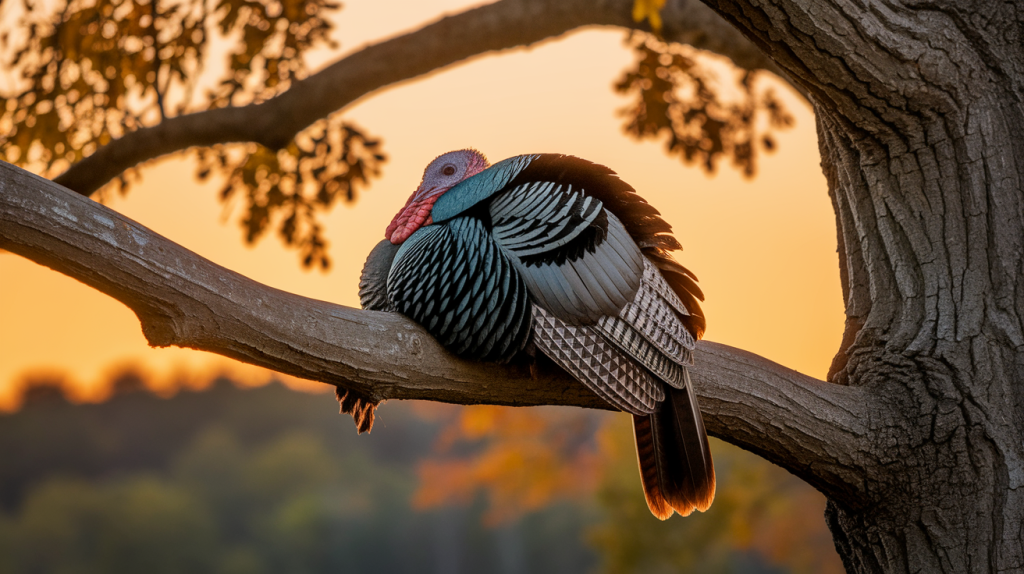Have you ever spotted wild turkeys during the day but wondered where they go at night? Well, this question arises when these large birds seem to disappear as the sun sets.
Wild turkeys need safe places to rest at night. Unlike their farm cousins, wild turkeys face many dangers from animals that hunt after dark.
This article explains where wild turkeys choose to sleep, the reasons behind their selection of these spots, and how their sleeping habits change.
So, let’s get into the details.
Where do Wild Turkeys Sleep at Night?
Wild turkeys sleep in trees—yes, even these heavy birds can fly up to their roosts when night falls. But not just any tree will do.
They carefully select tall trees, typically between 20 and 60 feet high, with strong, horizontal branches that can support their weight.
These branches provide both stability and safety, keeping them out of reach of predators like foxes and coyotes.
Oaks are popular during the warmer months thanks to their sturdy limbs. In the winter, pine trees become preferred for their dense, evergreen cover, which blocks cold winds and hides turkeys from view.
When available, turkeys often select trees that hang over water. This clever move puts an extra barrier between them and any land-based predators.
The sleeping site is usually not too far from food sources, but also not near well-traveled paths of predators.
They favor:
- Horizontal branches for steady footing
- Dense foliage for concealment
- Space to accommodate the entire flock
- Multiple escape routes if danger arises
Wild turkeys even remember safe spots and may return to the same roosting tree night after night, adapting their choices seasonally based on weather, predator patterns, and flock size.
Fun Facts About Wild Turkey
Did you know that wild turkeys have some truly fascinating habits and features? These large birds are full of surprises!
- Wild turkeys can run at speeds up to 25 miles per hour, faster than many humans can sprint.
- These birds can fly short distances at speeds of up to 55 miles per hour, despite their heavy bodies.
- A group of wild turkeys is called a “flock” on the ground and a rafter when in trees.
- Wild turkeys have keen eyesight and can see in color.
- Their vision is three times better than human vision, enabling them to spot predators from a great distance.
- They sleep with one eye open sometimes, allowing half their brain to rest while the other half stays alert.
- Male turkeys (toms) can change the color of their heads from red to blue to white, depending on their mood.
- Wild turkeys can make at least 30 different sounds to communicate with each other.
- Their memory serves them well – turkeys can recall and return to the same roosting tree night after night.
- They may travel miles away during daytime foraging but return to familiar sleeping spots.
Conclusion
Now that you know the sleeping habits of wild turkeys and how carefully they choose their roosting spots, you can easily deal with them.
These smart birds select tall trees with strong branches, often positioned over water, for added safety from nocturnal predators.
What does this tell us about wild turkeys? Their careful selection process shows how they’ve adapted to survive in the wild.
Their sleeping habits prove they’re skilled at avoiding danger.
Next time you spot turkeys during the day, look up at nearby tall trees; that’s likely where they’ll spend the night.















